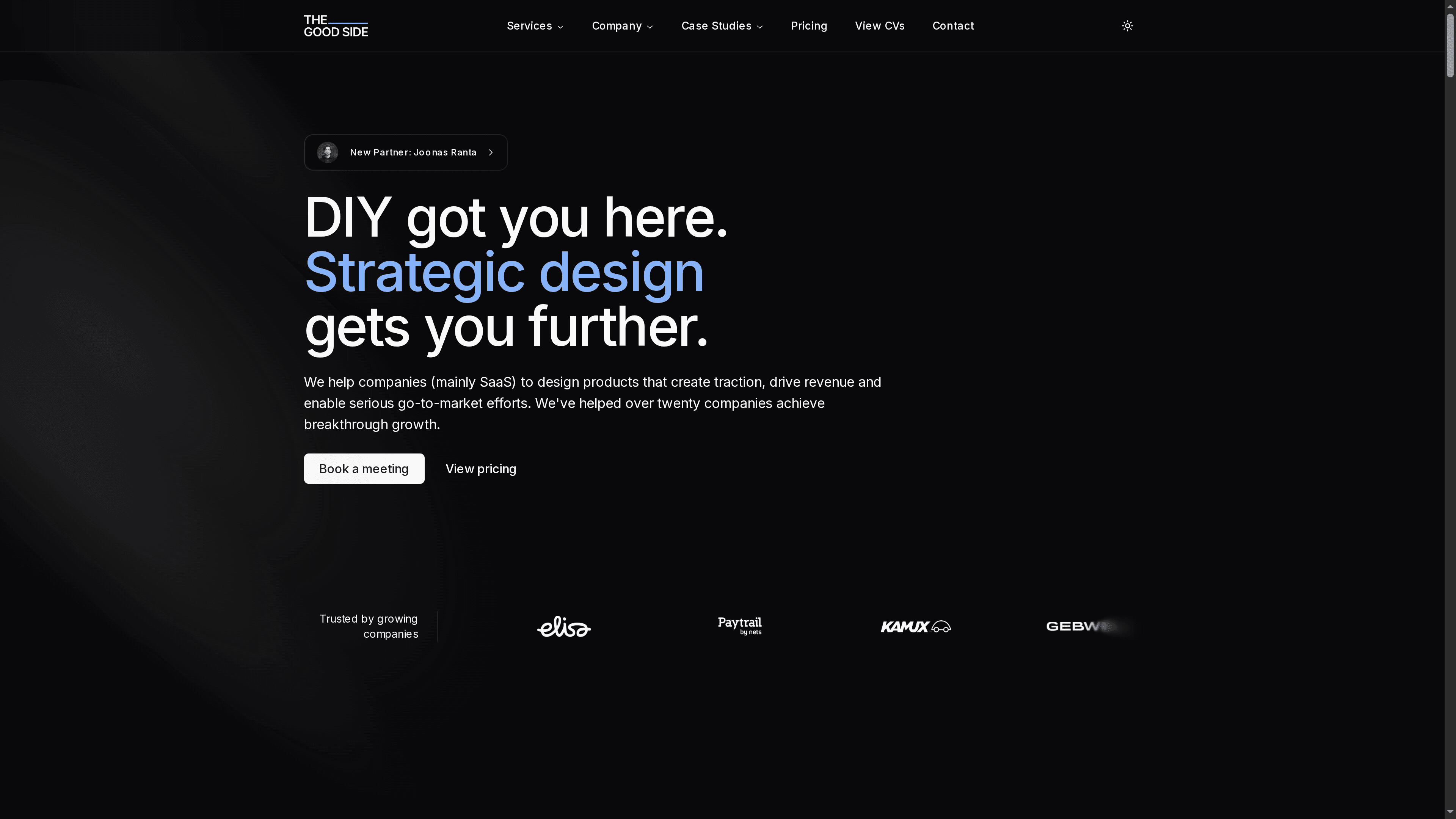What Is Scalable SaaS Design? Complete Overview
Scalable SaaS design explained: core principles, architecture, growth challenges, best practices, and real-world SaaS case studies in one complete guide.

Over 70 percent of SaaS companies report performance bottlenecks when their user base grows quickly. Scalable SaaS design matters because it separates sustainable growth from costly slowdowns. Choosing the right design principles lets software applications easily adapt as user demands shift, keeping both speed and reliability intact while avoiding technical snags that can drag business growth.
Table of Contents
- Defining Scalable SaaS Design Principles
- Core Architectural Patterns and Strategies
- Key Benefits for SaaS Growth and Longevity
- Common Pitfalls in Scaling SaaS Platforms
- Best Practices From Leading SaaS Products
Key Takeaways
| Point | Details |
|---|---|
| Architectural Flexibility is Key | Scalable SaaS design emphasizes modularity and decoupled structures to accommodate growth without major redesigns. |
| Leverage Microservices Architecture | Breaking applications into smaller, independently deployable services enhances scalability and accelerates innovation cycles. |
| Proactive Scalability Strategies | Implementing elastic resource allocation and automated scaling mechanisms prepares platforms for fluctuations in user demand. |
| Mitigate Common Pitfalls | Organizations should focus on creating redundancy and comprehensive monitoring to avoid critical performance risks as they scale. |
Defining Scalable SaaS Design Principles
Scalable SaaS design represents a strategic approach to building software applications that can seamlessly expand and adapt without compromising performance, user experience, or system integrity. According to research from architectural design studies, the core philosophy centers on creating flexible infrastructures that grow organically with business needs.
Architectural Flexibility becomes the cornerstone of scalable SaaS design. This means developing systems that can accommodate increased user loads, more complex workflows, and evolving feature requirements without requiring complete system redesigns. The key principles include:
- Modular component architecture
- Decoupled service structures
- Elastic resource allocation
- Dynamic performance scaling
Understanding scalability goes beyond technical implementation. UI Design as a Strategic SaaS Growth Driver highlights that scalable design must consider both backend infrastructure and frontend user experience. Successful SaaS platforms anticipate growth by creating adaptable interfaces that can absorb new functionalities smoothly, maintaining intuitive navigation and consistent design language.
At its essence, scalable SaaS design is about building intelligent, forward-thinking systems that don’t just respond to current requirements but proactively prepare for future expansion. By prioritizing modularity, performance optimization, and user-centric design, organizations can create software solutions that remain agile, efficient, and competitive in rapidly evolving digital landscapes.

Core Architectural Patterns and Strategies
Scalable SaaS architecture demands sophisticated design patterns that enable systems to grow, adapt, and perform efficiently under varying workloads. According to research from scalable architecture studies, successful platforms rely on strategic architectural approaches that go beyond traditional software development methodologies.
Multi-Tenant Architecture emerges as a critical strategy for SaaS scalability. This approach allows multiple customers to share the same infrastructure while maintaining strict data isolation and customization capabilities. As detailed in research on SaaS architecture patterns, the key architectural patterns include:
- Microservices Design: Breaking complex applications into smaller, independently deployable services
- Event-Driven Architecture: Enabling real-time responsiveness and loose coupling between system components
- API-First Development: Creating flexible interfaces that support seamless integration and extensibility
- Containerization: Ensuring consistent deployment and scalability across different environments
The evolution of cloud technologies has dramatically transformed SaaS architectural strategies. By implementing these patterns, organizations can create systems that not only scale horizontally but also maintain performance, security, and cost-effectiveness.
Here’s a summary of common architectural patterns and their core benefits:
| Pattern | Key Advantage | Typical Use Case |
|---|---|---|
| Microservices | Independent deployment | Rapid feature releases |
| Event-Driven Architecture | Real-time responsiveness | Notifications Analytics |
| API-First Development | Seamless integration | Third-party extensions |
| Containerization | Consistent deployment | Multi-cloud environments |
| Multi-Tenant Architecture | Cost savings | Serving multiple clients |
| Intelligent resource allocation, automated scaling mechanisms, and modular design principles become the foundation of modern, adaptable SaaS platforms. |
Ultimately, core architectural patterns are about creating intelligent, resilient systems that can evolve with business needs. By embracing flexibility, leveraging cloud-native technologies, and prioritizing strategic design principles, SaaS companies can build robust platforms that deliver consistent value while remaining agile in a rapidly changing technological landscape.
Key Benefits for SaaS Growth and Longevity
Scalable SaaS design isn’t just a technical strategy—it’s a critical business accelerator that transforms how organizations approach software development and customer value. According to research on scaling SaaS platforms, leading companies are unlocking unprecedented growth potential through intelligent architectural approaches that prioritize flexibility and efficiency.
Elastic Scalability stands out as a primary benefit, enabling businesses to dynamically adjust resources in response to fluctuating user demands. The key advantages include:
- Rapid Market Adaptation: Quick feature deployment without system disruptions
- Cost Efficiency: Pay-only-what-you-use infrastructure models
- Global Accessibility: Consistent performance across diverse geographical regions
- Enhanced Resilience: Automatic failover and load balancing capabilities
Microservices architecture emerges as a game-changing approach for sustainable growth. Best practices for building scalable SaaS architectures highlight how modular design enables independent deployment cycles, dramatically reducing system complexity and accelerating innovation cycles.
Ultimately, scalable SaaS design is about creating intelligent, adaptive platforms that don’t just meet current requirements but anticipate future business evolution. By embracing flexible architectures, companies can transform technical infrastructure from a cost center into a strategic growth engine, ensuring long-term competitiveness in an increasingly digital marketplace.
Common Pitfalls in Scaling SaaS Platforms
Scaling SaaS platforms is fraught with complex challenges that can quickly transform potential growth into operational nightmares. Research on scaling applications reveals that many organizations underestimate the intricate functional dependencies between services, which can dramatically impact overall system performance and reliability.
Architectural Vulnerabilities represent the most critical risk for growing SaaS platforms. The most prevalent pitfalls include:
- Single Point of Failure: Creating infrastructure without redundancy mechanisms
- Inefficient Load Balancing: Uneven distribution of computational resources
- Monolithic Design: Rigid architectures that resist modular expansion
- Inadequate Performance Monitoring: Lack of real-time scalability insights
According to design principles for high-growth applications, organizations frequently overlook the importance of building robust redundancy and load distribution strategies. This oversight can lead to catastrophic service interruptions, where a single component failure cascades into system-wide disruptions.
Navigating these pitfalls requires a proactive, holistic approach to system design. By anticipating potential bottlenecks, implementing comprehensive monitoring frameworks, and embracing flexible, modular architectures, SaaS companies can transform potential vulnerabilities into opportunities for resilient, adaptive platform development.
Best Practices From Leading SaaS Products
Leading SaaS organizations have developed sophisticated strategies for creating scalable, high-performance platforms that can adapt to rapidly changing market demands. Research on scaling SaaS platforms reveals that successful companies prioritize flexibility, modularity, and intelligent architectural design.
Architectural Innovation emerges as a critical differentiator for top-performing SaaS products. The most impactful best practices include:
- Microservices Architecture: Breaking complex systems into independently deployable services
- Cloud-Native Design: Leveraging distributed computing resources
- Automated Scaling Mechanisms: Dynamic resource allocation based on real-time demand
- Continuous Integration/Continuous Deployment (CI/CD): Rapid, reliable feature implementation
According to best practices for cloud engineers, successful SaaS platforms go beyond technical implementation. They create holistic ecosystems that balance performance, security, and user experience. By implementing robust monitoring frameworks, implementing intelligent caching strategies, and maintaining a modular approach to system design, leading companies transform potential limitations into opportunities for innovation.
Ultimately, the most successful SaaS products view scalability not as a technical challenge, but as a strategic advantage. They create adaptive, intelligent platforms that can rapidly respond to user needs, market shifts, and emerging technological trends, ensuring long-term relevance and competitive differentiation.
Accelerate Your SaaS Growth with Scalable Design Expertise
Building a scalable SaaS platform means overcoming challenges like architectural vulnerabilities, inefficient load balancing, and monolithic design that limit your product’s potential. The pain of slow feature deployment, system downtime, and poor user experience can hold your business back just when it needs to scale quickly and efficiently. This article highlights key principles such as modular component architecture, microservices, and elastic scalability — all essential for creating adaptive SaaS solutions that grow with your customers.
At The Good Side, we specialize in turning complex scalability challenges into clear, actionable design strategies that boost activation, conversions, and long-term revenue. With flexible engagement models—from part-time consulting to fully embedded teams—our senior designers bring deep SaaS expertise to deliver user research, UI/UX design, and strategic positioning that align your product with growth goals.
Ready to transform your SaaS into a scalable powerhouse?

Explore how our tailored approach can help you implement intelligent, user-centric, and modular designs that eliminate bottlenecks and prepare your platform for the next level of growth. Start now with a free design audit and rapid talent match at The Good Side to avoid costly delays and unlock your product’s full potential. Visit us to learn more and take the next step in building scalable SaaS solutions.
Discover more about how we optimize user journeys and product experiences on our landing page and elevate your software with expert strategic design.
Frequently Asked Questions
What are the core principles of scalable SaaS design?
The core principles of scalable SaaS design include modular component architecture, decoupled service structures, elastic resource allocation, and dynamic performance scaling. These principles ensure that the software can easily adapt to growth without compromising performance or user experience.
How does microservices architecture contribute to SaaS scalability?
Microservices architecture enables scalable SaaS platforms by breaking complex applications into smaller, independently deployable services. This approach enhances flexibility, allows for rapid feature releases, and reduces system complexity, leading to improved performance and scalability.
What are common architectural patterns used in scalable SaaS design?
Common architectural patterns include microservices design, event-driven architecture, API-first development, containerization, and multi-tenant architecture. These patterns facilitate efficient scaling, performance optimization, and resource management within SaaS applications.
What are the potential pitfalls when scaling SaaS platforms?
Potential pitfalls include single points of failure, inefficient load balancing, monolithic design, and inadequate performance monitoring. These issues can lead to system-wide disruptions and hampered growth, making it essential to proactively address them during the design phase.